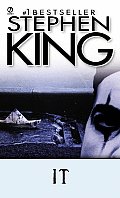
Whenever people find out that I worked on a book about the world's most famous clown, they immediately expect me to share inside stories of crazy, dissolute escapades. And I know I'll sort of disappoint them when I say, "I don't have any tales like that." Because I'm facing "the clown thing."
It's easy to understand why people enter the conversation with such expectations. Put aside for the moment the fact that some people are afraid of clowns (coulrophobia for you collectors at home). Let's just focus on a quick mention of some recent (and not so recent) depictions of clowning in literature.
Salman Rushdie's 2005 work Shalimar the Clown is a rich, densely layered tale that explores the roots of terrorism and extremism. The title comes from the main character's skill as a tightrope performer. Many critics wrote that Rushdie obviously poured his own traumatic experiences into the book.
There was Sara Gruen's 2007 novel Water for Elephants. This highly successful novel, now being made into a movie, featured the hard-scrabble life of a second-rate circus in the days surrounding the Great Depression. Applauded in some quarters for being highly-researched and really nailing the circus lifestyle, Water for Elephants is sure to sell many more copies when the film version, staring Reese Witherspoon and Robert Pattinson, is released.
 The year 2007 also saw the publication of Monica Drake's Clown Girl: A Novel. In this dark tale (featuring an introduction by Chuck Palahniuk, which gives you an idea of the book's tone and subject matter) focuses on Nita, who is known to most people as Sniffles the Clown. The protagonist gets into a series of misadventures while struggling to keep the gigs coming in and save enough for tuition to Clown College.
The year 2007 also saw the publication of Monica Drake's Clown Girl: A Novel. In this dark tale (featuring an introduction by Chuck Palahniuk, which gives you an idea of the book's tone and subject matter) focuses on Nita, who is known to most people as Sniffles the Clown. The protagonist gets into a series of misadventures while struggling to keep the gigs coming in and save enough for tuition to Clown College.
But no review of clown literature can be complete without mentioning Stephen King's gargantuan 1986 book It. On my current book tour and while fulfilling other media obligations, people constantly ask me about It. Although I certainly understand the reason fans are so fascinated by Pennywise the Dancing Clown and his evils in the novel, I've gotta admit: I have never made it through the whole book, which probably says more about my own relationship with horror novels than it does about the book's strengths.
But the interesting thing about so many of these fictional depictions of clowns is that they are, if not wholly negative, certainly not exactly happy tales. The "clown thing" predisposes people to think about the dark stuff.
Which is what I expected when I started working on The Man behind the Nose: Assassins, Astronauts, Cannibals, and Other Stupendous Tales with Larry Harmon. I thought I was going to see some rough and tough experience, full of dirt and grime, that ran counter to the character's pristine persona. I was expecting something similar to Billy Bob Thornton's movie Bad Santa.
 Instead, what I heard was a tale of optimism and positivity. Sure, like anyone with a long life and successful career, Larry had challenges and conflicts and critics. But he never brought them up while we worked on the book. He didn't dwell on the negative, he just moved forward with the positive. And so our book turned out to be a sort of collection of adventure tales and other stories, like listening to your beloved grandpa spin his yarns. It is not a comprehensive biographical accounting of every day of the subject's life. It's much more light-hearted — about fun and adventure and optimism.
Instead, what I heard was a tale of optimism and positivity. Sure, like anyone with a long life and successful career, Larry had challenges and conflicts and critics. But he never brought them up while we worked on the book. He didn't dwell on the negative, he just moved forward with the positive. And so our book turned out to be a sort of collection of adventure tales and other stories, like listening to your beloved grandpa spin his yarns. It is not a comprehensive biographical accounting of every day of the subject's life. It's much more light-hearted — about fun and adventure and optimism.
So it's hard to place the book within the context of so many other pieces of clown literature. While they've documented the hardships of clowning around, this book focuses on the joy of spreading laughter to millions of people.